Fertilizing cherries in spring and summer: how to fertilize for good fruit set and a high yield
So, you have decided to feed your cherries in the spring and want to know what fertilizers are suitable for this. Right?
However, before getting down to business (feeding), it is worth considering several important nuances: the age of the tree, did you apply autumn fertilization last year, were there any problems with fruit set.
Next, we will try to understand and answer questions regarding when and how to feed cherries in the spring so that the tree actively blooms and bears fruit abundantly.
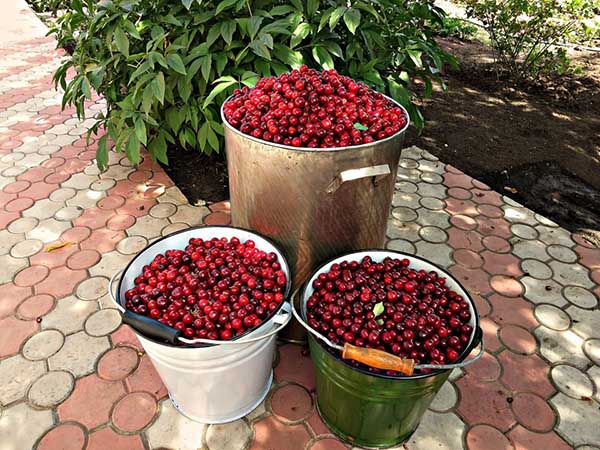
Content
- 1 Why do you need spring feeding of cherries
- 2 When and how to feed cherries in spring and summer: timing and scheme
- 3 Fertilizers for feeding cherries in spring and summer: options
- 3.1 Nitrogen fertilizers: mineral and organic
- 3.2 Complex mineral dressing
- 3.3 Potash and phosphate fertilizers: mineral and organic
- 3.4 Calcium dressing or why cherries do not bear fruit
- 3.5 Fertilizers for cherries (fruit and berry crops)
- 3.6 Fertilizers with humates and microelements
- 3.7 Autumn potassium-phosphorus fertilizing (after harvest)
- 4 How to fertilize cherries correctly: types (methods) of feeding
Why do you need spring feeding of cherries
Cherry, like any other fruit tree, needs a certain nutrition, namely a complex of macro- (nitrogen, phosphorus and potassium) and microelements (the most important calcium, and boron, magnesium, iron other).
- Nitrogen - is required for the active growth of shoots and the development of the leaf apparatus (leaves), i.e. a set of green mass. This is especially true in the spring.
However! In no case do not overfeed your plants with nitrogen fertilizers, especially do not use them in the second half of the growing season (from July)!
- Phosphorus - primarily responsible for the root system of the plant, as well as for the formation of generative organs, flowering and fruit setting.
- Potassium - improves carbohydrate metabolism, the processes of filling and ripening fruits, and also accelerates the ripening of shoots, increases the plant's immunity, its resistance to unfavorable growing conditions (drought and frost).
Phosphorus and potash fertilizers (especially phosphorus), as a rule, are applied dry after fruiting, so that they become available to plants next year. However, if you did not do this last fall, then you can feed it in the spring - before and after flowering, but already giving fertilizer in a dissolved (liquid) form, so that the plant receives nutrition immediately.
Naturally, the main work is performed by macronutrients, directing metabolic processes towards protein (more nitrogen) or carbohydrate synthesis (more potassium). Micronutrients are designed to improve the absorption and work of macronutrients, thereby stimulating metabolism.
Since cherry is a stone fruit crop, high-quality calcium nutrition.
And don't forget about magnesium.
Thus, thanks to timely and high-quality feeding of cherries in the spring and summer, you can positively affect the green mass of the plant (the formation of annual growth and leaves), its fruiting - the quantity and quality (size, color, taste) of future berries, as well as increase immunity plants and its resistance (to drought, frost), you will help to better establish fruit buds, from which the next harvest will be.
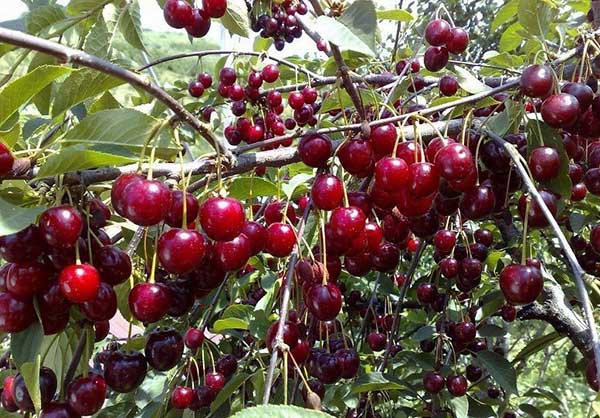
When and how to feed cherries in spring and summer: timing and scheme
Cherry feeding should be carried out in accordance with its needs, i.e. according to a certain scheme. Therefore, it is extremely important to know when and at what time to apply certain fertilizers.
As a rule, all fruit trees, including cherries, are fed 3-6 times per season, focusing on the phases of plant development.
The scheme for feeding cherries in spring and summer is as follows (the main dressings are highlighted in bold):
- in early spring (it is possible even in the snow) - nitrogen-phosphorus-potassium root top dressing, i.e. complex (like nitroammophoska) or purely nitrogen (ammonium nitrate);
- before flowering;
- during flowering;
- after flowering - nitrogen foliar feeding (urea);
- after the formation of ovaries;
- after fruiting (in autumn) - phosphorus-potassium root top dressing (superphosphate + potassium sulfate or potassium monophosphate).
That is, in general, 3 fertilization applications will be enough for you.
However! If there is not enough calcium in the soil (the fruits do not set well = seeds are not formed), during the flowering period there is unfavorable weather (you need boron), you did not do phosphorus-potassium fertilizing last year, in this case you will need to complete 5-6 fertilizing.
Early spring (before bud break)
The first feeding of cherries is carried out in early springwhen a positive temperature begins to establish (the snow is actively melting) and the tree begins to wake up (its buds are just swelling), that is, after you spend spring cherry pruning.
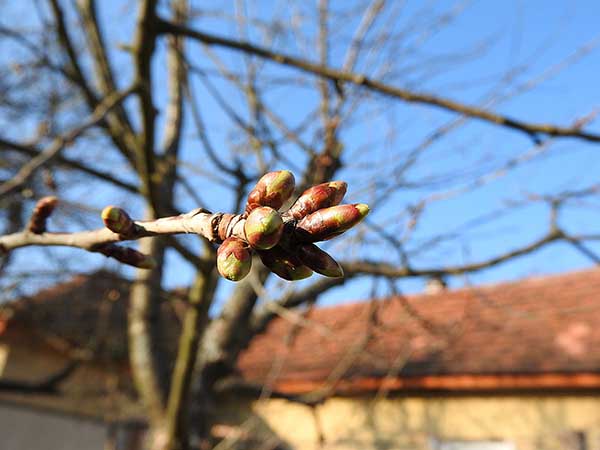
At this point, the plant needs a lot of nitrogen to build up green mass. Ammonium nitrate (can still be in the snow) or urea (when the temperature is +10) - that's your choice.
Think! On the other hand, in order for potassium and phosphorus to dissolve and be “drawn in” by plants, it is better to add them right now. Therefore, for this top dressing, it is convenient to use complex fertilizers such as nitroammofoska, which contain all macroelements, including nitrogen (16% each).
During the same period, you can mulch the tree trunk circle with compost or humus (these are excellent organic nitrogen fertilizers of prolonged, i.e. long-acting).
Before flowering
In order for the berries to gain weight and sweetness, they need a sufficient amount of potassium and phosphorus nutrition (especially potassium). However, if you now add dry potassium sulfate and superphosphate, or the same nitroammofosk (or diammofosk), the cherry still will not receive the required macronutrients.
By the way! That is why they (especially phosphate fertilizers) are introduced in the fall, so that they become available to plants next spring.
Therefore, if you did not feed your trees with phosphorus-potassium fertilizers last fall (but if you did, then don't!), You need to do it now (in spring), but already in liquid formby dissolving one or more fertilizers in water.
At this point, you can use and organic fertilizers: the same infusion of chicken manure, mullein, which, in addition to nitrogen, also contains phosphorus, potassium and other trace elements.
Also during this period you can give calcium supplementation (see separate paragraph) if necessary (you have acidic soil and calcium deficiency).
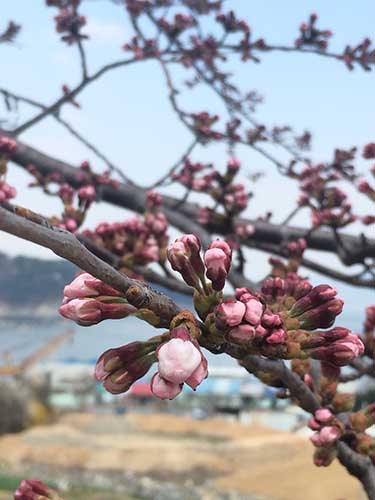
During flowering
If the weather is unfavorable, then improve fruit setting, very good at the beginning of flowering (you can still use a pink bud) foliar feeding (per sheet) cherriesboron (boric acid solution).

By the way! Boron also increases the sugar and vitamin C content of fruits.
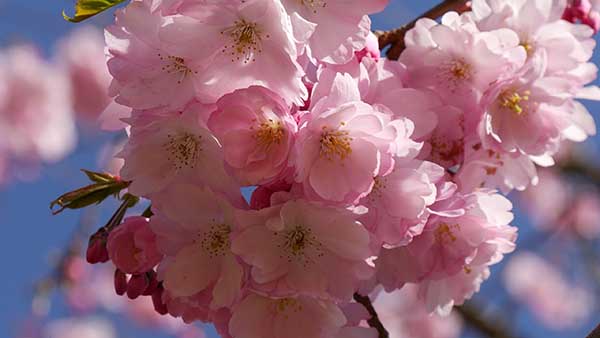
After flowering and at the beginning of ovary formation
If you have not previously applied nitrogenthen now it's time to do it (5-7 days after flowering)... Moreover, you can carry out just foliar feeding - spraying cherries with a solution urea, and repeat after 3-4 weeks.
Either apply dry fertilizer to the trunk circle or spill it with a liquid solution (ammonium nitrate or urea).
No more nitrogen fertilizing should be done strictly until July (even better until the end of May or the beginning of June).
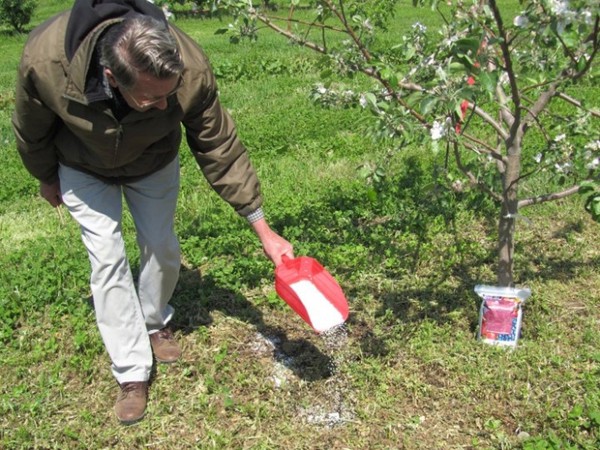
After the formation of ovaries
During this period, you can use complex potash-phosphorus fertilizers, as well as micronutrient fertilizers (with trace elements) in fast-digesting (chelated) form, again producing foliar feeding. For example, for this, Potassium monophosphate, and Plantafid and AgroMaster from the Russian company Agromaster, Aquarine from the Buisk chemical plant (potassium monophosphate is produced by the same plant), Potassium humate, Humate +7.

After harvest (late summer-fall)
By the way! The site already has a separate article about how to feed cherries and cherries in autumn (after fruiting and harvesting).
The purpose of the last (autumn) cherry feeding is to make the tree strengthened its root systemso to speak increased winter hardiness (especially it concerns young cherry trees, in this case, the trees will be able to more easily endure severe frosts and temperature drops), and also improved their immunity - resistance to various kinds of diseases.
And of course, so that an adult fruiting cherry will lay flower buds = ready for the next harvest.
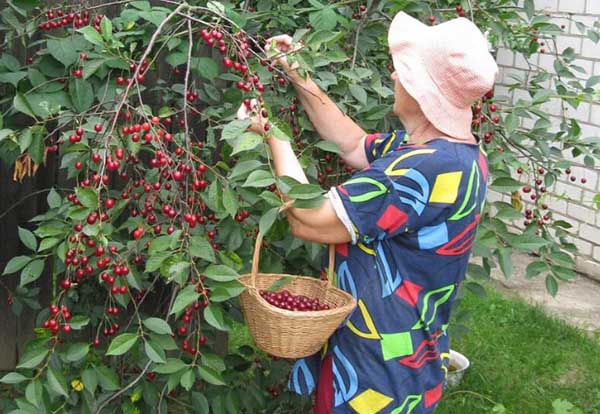
Therefore, cherries during this period require a lot phosphorus and potassium. For example, you can give superphosphate and potassium sulfate or simply potassium monophosphate.Of course, it is desirable to do this in liquid form (in the form of a solution), but it is also possible in dry form (so that food becomes available by the next season).
And if this year the cherries experienced problems with setting and forming berries, then it would be good to give a calcium supplement (see a separate paragraph), about a month after the phosphorus-potassium supplement.
Fertilizers for feeding cherries in spring and summer: options
In principle, earlier most of the fertilizers suitable for spring and summer feeding of cherries have already been named. However, for your convenience, below will be a list of them with their images, including indicated alternatives (of course, if available).
Advice! It is better to combine mineral and organic fertilizers than to use only one.
Nitrogen fertilizers: mineral and organic
Remember! They are used only in spring (until late May-early June, maximum - until July).
The fact is that nitrogen contributes to growth activity, so after June it is better not to add it to the soil, otherwise in winter the shoots may freeze.
Mineral nitrogen fertilizers:
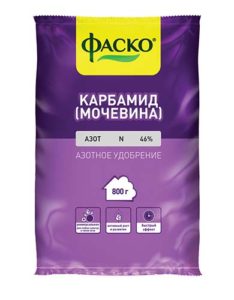
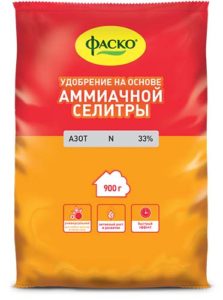
By the way! Not sure which mineral nitrogen fertilizer to choose? The site contains material about how does ammonium nitrate differ from urea.
- Calcium nitrate (14.9% nitrogen, 27% calcium).
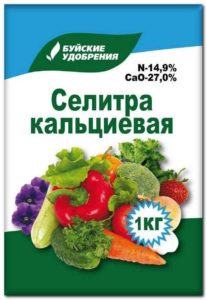
Organic nitrogen fertilizers:
- chicken droppings;
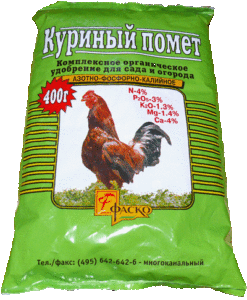
By the way! Please note that purchased poultry manure contains the entire range of macronutrients, as well as some trace elements.
- infusion of cow dung or mullein;
- green fertilizer (the same infusion of nettle or other herbs).
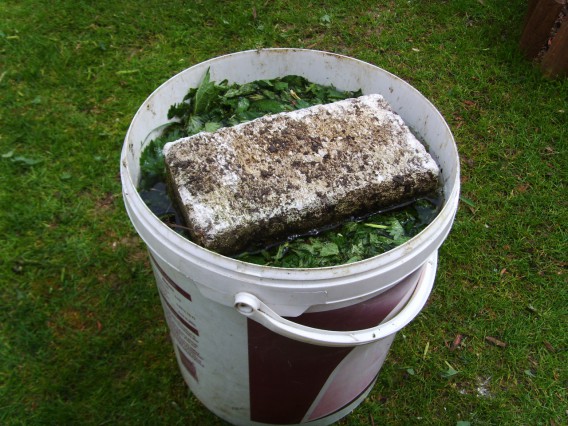
And also very good mulch trunk circle compost or humus.
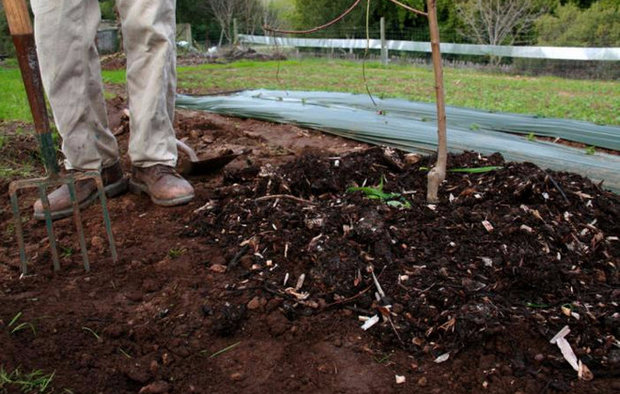
Complex mineral dressing
It is very convenient to use complex mineral fertilizers, which contain all the macronutrients.
So, cherries in early spring (before flowering) can be fed with the following complete mineral fertilizers:
- Nitroammofosk or azofosk (nitrogen, phosphorus, potassium - all 16% each).
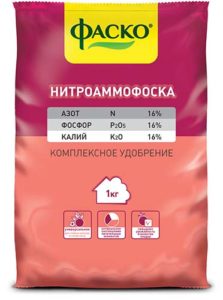
- Diammofoska - 10% nitrogen, 26% phosphorus and potassium each.
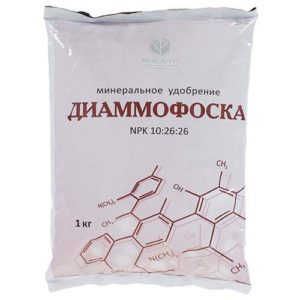
Note! The composition of these fertilizers does not include any trace elements, and it is very desirable to add them. Therefore, it is highly recommended to add the same humates to the solutions, which are described in more detail later, in the last paragraph.
Potash and phosphate fertilizers: mineral and organic
Suitable for feeding in late spring and summer (before and after flowering), as well as in autumn.
Mineral phosphorus fertilizers
- Simple and double superphosphate.
Advice! The site has a separate article about how to use superphosphate correctly.
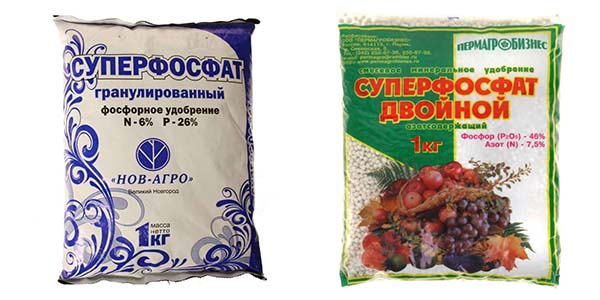
- Ammophos.
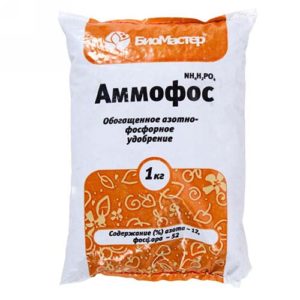
Mineral potash fertilizers
- Potassium sulfate (potassium sulfate).
Important! You need to be careful with potassium sulfate: in case of an overdose, you can provoke a root burn.
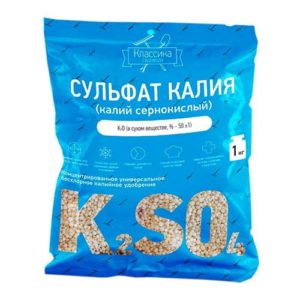
By the way! Instead of potassium sulfate (potassium sulfate), you can use potassium nitrate (nitrogen -13.6%, potassium 46%), but preferably before July.
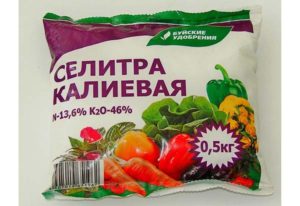
And it is also very convenient to use kalimagnesia, which, in addition to potassium (32%), contains such an important trace element as magnesium (12%).
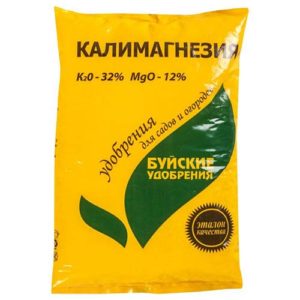
Organic potassium phosphorus fertilizers
If you proponent of organic farming, then you can as potash feeding use wood ash.
By the way! The ash also contains some phosphorus, lot calcium, as well as many other trace elements.
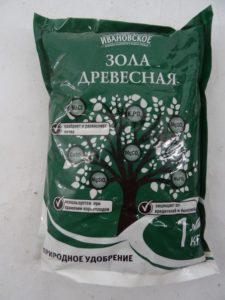
Concerning phosphorus, then it is contained in the same bone meal where there is also lot calcium (up to 45%).
However! Bone meal is a very long-lasting fertilizer (unlike wood ash).
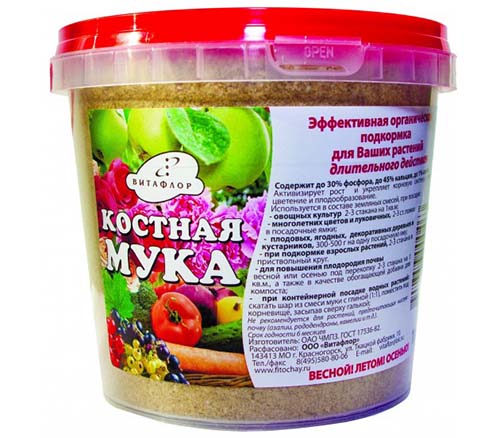
Video: feeding fruit trees with bone meal
Calcium dressing or why cherries do not bear fruit
It often happens that the cherry blossoms beautifully, but as a result, very few fruits are formed - for some reason they are not even tied.
Perhaps it is due to excessive soil acidity, against the background of which stone fruit culture experiences lack of calcium.
By the way! In the spring, you can apply a nitrogen-calcium fertilizer such as calcium nitrate.
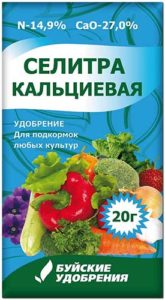
How make the soil more alkaline (reduce its acidity)?
That's right, add one of the deoxidizers: chalk, lime or dolomite flour.
However, these funds work very slowly, and the soil will change its acidity only after a fairly long time (on average - after a year and a half).
Accordingly, if you need the fastest effect, then you need to do quick calcium feeding, in other words, to increase the solubility and assimilation of calcium in deoxidizers. Acetic acid (vinegar) will help you out in this.
By the way! Vinegar (acetate) helps plants to withstand drought better (increases their drought tolerance).
An instant and easily digestible calcium supplement for cherries (and other stone fruits) can be prepared as follows (recipe from Procvetok):
Before feeding, as always, it is necessary to water abundantly.
- take 150-200 grams chalk, lime or dolomite flour;
- pour 1 liter of 9% table vinegar (you need to pour it slowly, controlling the chemical reaction);
- add water up to 10 liters;
- to feed under the root;
By the way! This solution can be used for foliar feeding, i.e. spray on the leaves. But in this case, the solution must be made 3-4 times less concentrated, i.e. diluted in 30-40 liters of water. Or initially take 50-70 grams of a deoxidizer, 250-300 ml of vinegar per 10 liters of water.
- then spill the tree again abundantly with plain water (so that the top dressing just gets to the roots).
Note! Of course, other reasons should not be ruled out, such as poor pollination... The fact is that stone fruit crops will normally be pollinated only if they grow on your site several different varieties of the same flowering period at once.
Also maybe the flowers are frozen, and the berries were not set. In addition, the plant can simply get sick. Or he was attacked by pests.
Fertilizers for cherries (fruit and berry crops)
If you do not want to bother (you are a "lazy" summer resident), then you can buy one of the special complex fertilizers for cherries (and fruit trees), which already contains all the macro- and microelements (all apply and dilute according to the instructions on the packages):
- DianAgro "Cherry dressing" (autumn-spring).
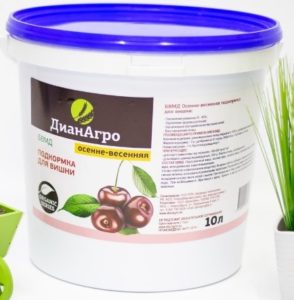
- Gumi-Omi "Fruit trees and shrubs".
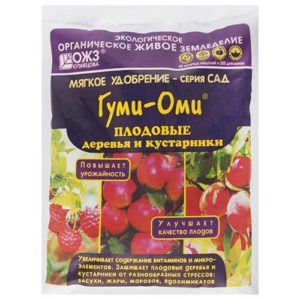
- Specialized fertilizers are especially popular prolonged action... For example, "Spring"From" Fusco ".
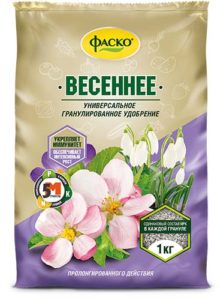
- Aquarine "Fruit and Berry" from "Buy Fertilizers" (quickly assimilated, microelements in a chelated form, can be introduced starting from the flowering phase, as well as foliar dressing).
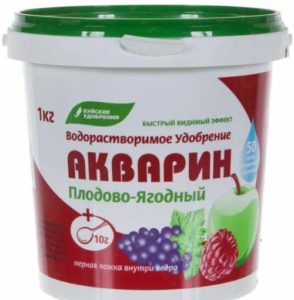
- Plantafid from "Agromaster" (quickly digestible, contains trace elements in a chelated form, ideal for foliar dressing at different periods of plant development, depending on the need, from early spring, before, during and after flowering).
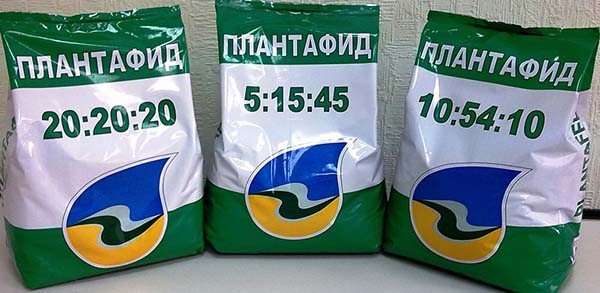
- Hera "Orchard" other.
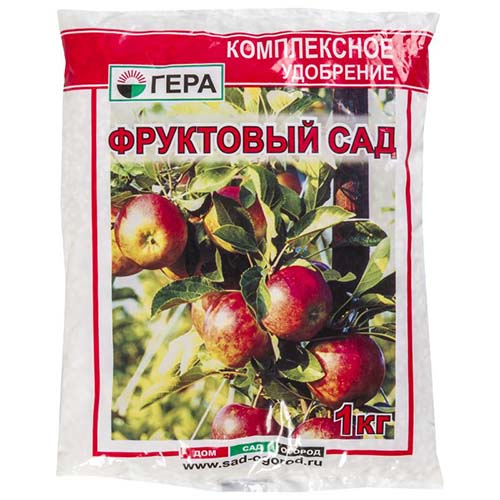
Fertilizers with humates and microelements
Very good to use humateswhich contribute to better absorption of mineral fertilizers. Therefore, you can prepare the solution first Potassium humate, and then add a complex mineral fertilizer to it, for example, the same Nitroammofosku or Superphosphate.
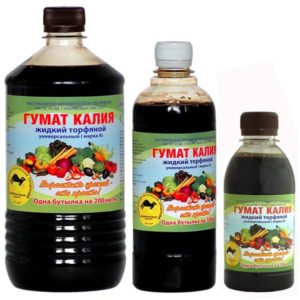
By the way! Now humates are initially added to some complex mineral fertilizers. For example, "Strong " from Fasco with potassium humate and trace elements.
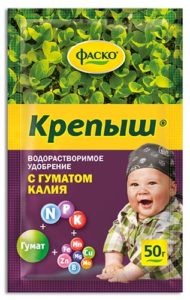
In general, it is very convenient to use for foliar feeding of cherries and other crops ready-made cocktails with essential microelementstype Humate +7 Iodine.
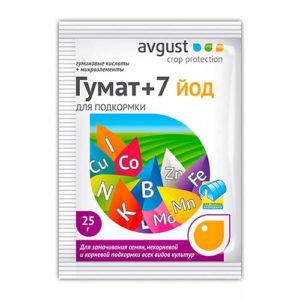
For application to the soil, you can use such micronutrient fertilizer from the Buisk Fertilizers plant.
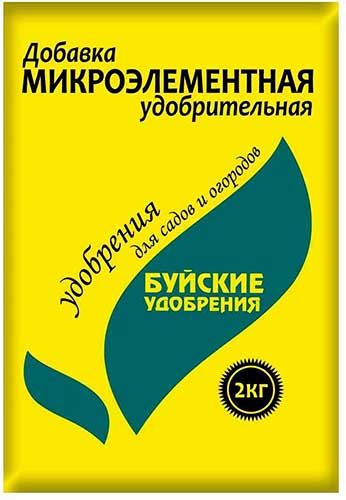
Autumn potassium-phosphorus fertilizing (after harvest)
An excellent option for feeding cherries after fruiting and harvesting (i.e.at the end of summer-autumn) the following combinations of mineral and organic fertilizers can be.
First option:
- Superphosphate

- and potassium sulfate (potassium sulfate).

- either potassium chloride or potassium salt.
Note! It is not necessary to apply chloride potash and phosphorus fertilizers in the spring (for example, potassium chloride, potassium salt and diammophos). Such feeding can provoke plant disease. chlorosis.
Another thing is if they are applied dry. in the fall (this is allowed), because by spring all chlorine will be washed out of the soil.
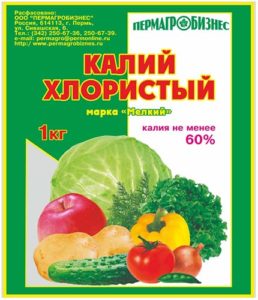
Second option:
- Diammofoska - 10% nitrogen, 26% phosphorus and potassium each.

Third option:
- Borofoska (Phosphorus - 10%, potassium - 16%, calcium - 20%, magnesium - 2%, boron - 0.25%).
However, in borofosk there is not sulphate, but potassium chloride, so this fertilizer can be used to feed cherries only in autumn (and it is in dry form).
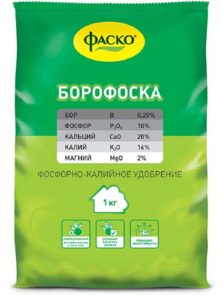
Fourth option:
- Potassium monophosphate (Phosphorus - 50%, potassium - 33%).
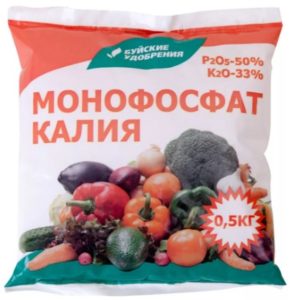
How to fertilize cherries correctly: types (methods) of feeding
Basic rules and recommendations for spring and summer fertilization of cherries:
- 1-2 year old cherries, planted last year, do not need to be fertilized in the spring if sufficient nutrients = fertilizers were added to the soil during planting.
They begin to feed only after 2-3 years, since only by this time the plants will have pulled out of the soil all the nutrients introduced during their planting.
- Before liquid feeding cherries, it is recommended spill the tree with plain water firstsince it is always necessary to fertilize on wet soil, especially with mineral fertilizers.
By the way! You can water it a day or 1-2 hours before feeding.
- If, during root feeding, you get on the leaves and fruits, then try to "sprinkle" (slightly rinse) with plain water.
The fact is that foliar feeding requires a significantly lower concentration of fertilizers (2-4 times).
- It is desirable to make top dressing in the morning or evening hours, but not at noon, when the sun is at its zenith. It's another matter if cloudy day - then it is possible in the afternoon.
- Any granular mineral fertilizer better pre-dissolve in a separate container in hot water (you can use boiling water), since granules, as a rule, dissolve in cold water rather poorly and slowly.
Methods or types of feeding
Exists 2 ways or type of feeding any plant (including cherries):
- root (embedding or watering along the perimeter of the crown)
- foliar (by leaves).
Let's take a closer look at each of them.
As a rule, it is in the spring major root dressing... And now closer to summer or summer can be done and foliar feeding (by leaves).
Root dressing
Root feeding means applying fertilizer directly under the root of the plant, however, in this case (when feeding a tree), fertilizer needs to be applied not under the trunk, but in the near-trunk circle along the perimeter (projection) of the crown, i.e. departing from the trunk at least 50-70 cm. It is at this distance that the roots of the tree are located, which you want to provide with food (feed).
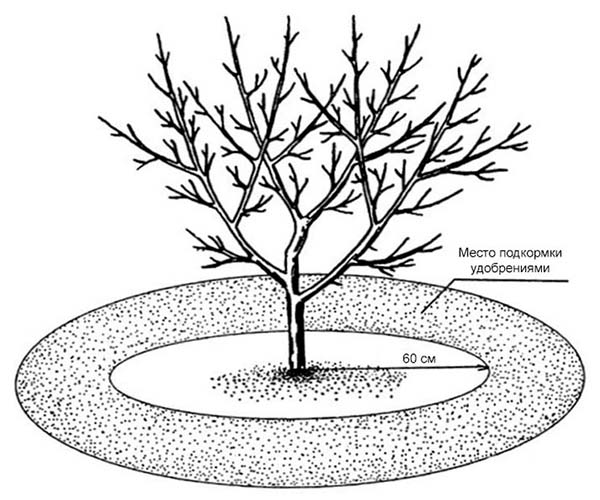
In this case, fertilizers must be embedded in the soil in small doses into depressions (20-30 cm) or simply scattered around the perimeter (diameter) of the crown, followed by embedding (using a hoe, flat cutter).
Alternatively, you can apply a focal (long-term) feeding method. Namely, make 10-12 pits 20-30 cm deep along the perimeter of the crown, in each of which add 200-500 grams of potassium sulfate (sulfate) and superphosphate, and then dig in. Such fertilization of cherries is more than enough for 5-7 years.
The disadvantage of applying fertilizers dry is that they will gradually dissolve during watering or rains (i.e., this is a longer feeding, when the plant is fed gradually).
By the way! At the same time, dry dressing is convenient to carry out during rainy seasons, for example, in the same autumn or early spring.
However, as for young cherries, then it is better to feed them liquid solutions.
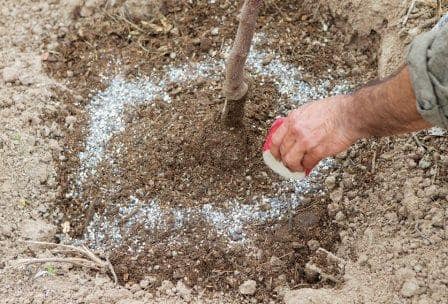
Naturally root dressing can also be done and in liquid form. In this case, fertilizers must first be dissolved in water and shed along the crown projection. So nutrition almost immediately reaches the roots of the plant.
For root dressing, as a rule, mineral fertilizers with macronutrients, and organic (including performing mulching).
Foliar dressing
You can fertilize cherries in spring not only at the root, but also on the leaves. In the case of foliar dressing, fertilizers are applied through the aerial part of the tree, that is, through the surface of the leaves by spraying them.
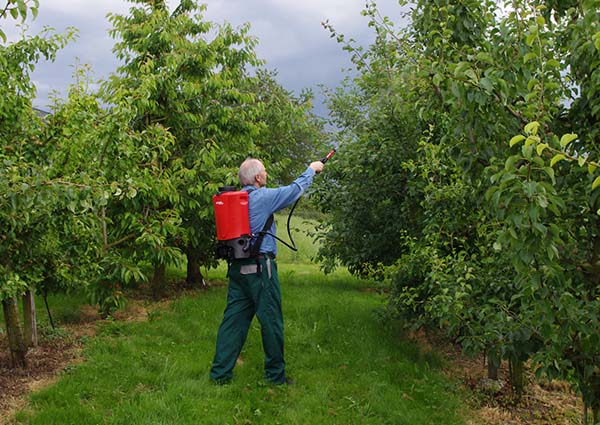
Note! It is believed that foliar feeding is most effective when the plant especially needs certain nutrients (which is manifested in its appearance), in other words, they are carried out as needed.
However, the effectiveness of such dressings still largely depends on weather conditions. Namely, it should be calm, and the temperature should not be higher than 25 degrees. Therefore, as a rule, foliar feeding is performed early in the morning or in the evening.
- The most effective foliar dressing is spraying trees at the beginning of their flowering boron, namely solution boric acid... This trace element is noticeably improves fruit set (your future harvest) in unfavorable conditions. For example, if it is cool enough, so to speak, the weather is not flying for bees.
- The same urea (carbamide) it is even better to use it in the spring as a foliar nitrogen dressing (20-30 grams per 10 liters of water).
- You can also use complex fertilizers with macro and microelements in a chelated (quickly assimilated by plants) form... For example, the same Plantafid, AgroMaster from the Russian company Agromaster, Aquarin from the Buisk chemical plant (Buisk fertilizers).
By the way! You can foliar cherries together with spring spraying of trees with pesticides against diseases and pests... As a rule, fertilizers can be added to solutions of fungicides and insecticides if there are no contraindications (for example, Bordeaux liquid better not to mix with anything).
Thus, foliar dressing, as a rule, is carried out with the help of fertilizers, which include trace elements, but fertilizers with basic macronutrients are often used (more often it is complex, in a rapidly digestible form).
It is worth understanding! Foliar dressing cannot completely replace root dressing. Therefore, the root is the main dressing, and the foliar is additional.
Features of feeding young and old cherry trees
Young and already adults actively bearing cherries need different fertilizing from each other, more precisely in their various concentrations (the larger the tree, the more food it needs).
For example, for a small tree (up to 3 years old), 1-2 buckets of fertilizer solution is enough, for a 4-6-year-old tree - 2-3 buckets, for a tree up to 10 years old - 3-4, and for an older tree - and 5 buckets ...
Clarification! Young - these are not yet fruit trees.
As a rule, cherries begin to bear fruit 3-4 years after planting (if you planted a 1-2 year old seedling).
Old (adults) - these are trees that have already entered the fruiting phase (over 4-5 years old).
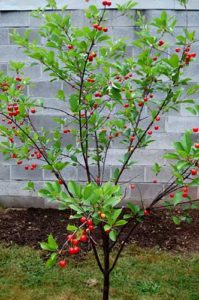
Interesting! Many gardeners do not advise at all to feed cherries and any fruit trees until they begin to bear fruit, especially if you originally planted them in fertile soil (adding a supply of organic and mineral fertilizers to it).
Well, now you know how and what you need to feed cherries in spring and summer, so that they quickly gain green mass, bloom well, form many ovaries and, as a result, delight you with a bountiful harvest. Good luck!

